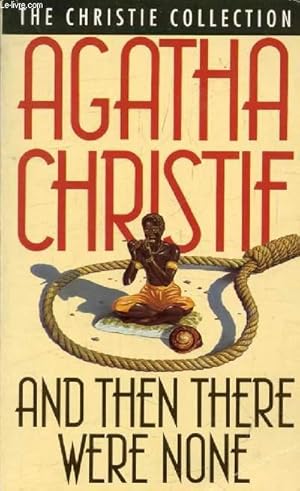

“No reliable witness has seen her since the night she left her house in Sunningdale a week ago,” the Times reported in 1926. According to the alleged letter, she had gone to a Yorkshire spa “for rest and treatment,” per The New York Times.Īpparently unconvinced by the letter, police expanded their search with trained canines, Christie’s own pet dog and help from amateur sleuths.Ī week into Christie’s disappearance, detectives remained puzzled. To this day, the intentions behind her disappearance remain vague.Īfter searching for three days, Police claimed Christie’s brother-in-law had received a letter from the novelist confirming her whereabouts. “She set out deliberately - the facts shout it - to throw murder suspicion upon her husband,” one biographer claimed, per the Guardian.

Several people even believed Christie was attempting to frame her husband for murder. Others had darker theories, suggesting the writer had deliberately drowned herself or was murdered by her husband, who was known to have a mistress, per History Extra. Some claimed Christie’s disappearance was nothing more than an elaborate publicity stunt. “In the car were found articles of clothing and an attaché case containing papers.”Īs the police search spread, so did rumors. “The car evidently had run away, and only a thick hedge-growth prevented it from plunging into the pit.” “The novelist’s car was found abandoned near Guildford on the edge of a chalk pit, the front wheels actually overhanging the edge,” The New York Times reported in 1926. There was still no sign of where Christie ran off to - or why she ran away at all. Police quickly located Christie’s abandoned vehicle on a steep slope near Guildford, England. For the first time, even airplanes got involved in the case, reports History Extra. More than a thousand police officers were tasked with tracking Christie down. The strange circumstances sparked a massive manhunt. Her disappearance felt like a plot straight out of her own novels.

She had published several notable detective novels, including: “The Man in the Brown Suit,” “The Secret Adversary” and “The Murder of Roger Ackroyd.” It was a rather insignificant turn of events - until the writer didn’t turn up for nearly two weeks.Īt just 36, Christie was already a prolific mystery novel writer. Archibald Christie, with nothing more than an attaché case, per The New York Times. 6, 1926, the whodunit novelist kissed her 7-year-old daughter goodnight and sped off from the England home she shared with her husband, Col. Despite her complicated legacy, to this day, Christie is still one of the best-selling fiction writers of all time - and a rite of passage for South Asian readers.Agatha Christie’s greatest mystery may be her own puzzling disappearance. In turn, her writing has inspired dozens of South Asian films, plays, and novels. The author, despite never having visited the subcontinent, borrowed from then undivided India time and again. The news of the unsolved murder traveled to the legendary Sir Arthur Conan Doyle in London via imperialist Rudyard Kipling, also a lifelong Mussoorie resident, and then, you guessed it, none other than Christie. Hotel staff discovered her body one morning - despite doors bolted from the inside - and that her traveling companion Eva Mountstephen had left for Lucknow. In 1911, Garnett stayed at the Savoy Hotel, a luxury hotspot an Irish barrister had built in Mussoorie for British officers and visiting diplomats. While the novel is set in Essex, England, it took inspiration from the unsolved murder of Lady Garnett, an English spiritualist vacationing in the hill station of Mussoorie, India.

The simplest explanation is always the most likely,” Agatha Christie wrote in her debut detective novel, The Mysterious Affair at Styles (1920). “Imagination is a good servant, and a bad master.


 0 kommentar(er)
0 kommentar(er)
